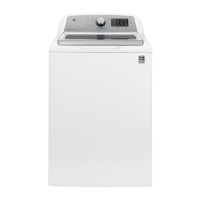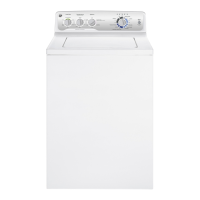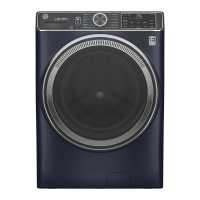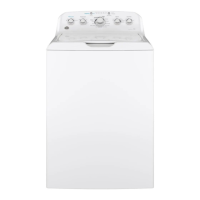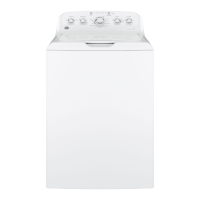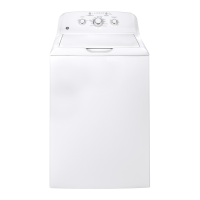“L” WASHER
IMPORTANT
Electric Discharge (ESD)
Sensitive Electronics
ESD problems are present everywhere. ESD may damage or weaken the
electronic control assembly. The new control assembly may appear to work
well after repair is finished, but failure may occur at a later date due to ESD
stress.
• Use an anti-static wrist strap. Connect wrist strap to ground connection
point or unpainted metal in the appliance.
–OR–
Touch your finger repeatedly to ground connection point or unpainted
metal in the appliance.
• Before removing the part from its package, touch the anti-static bag to a
green ground connection point or unpainted metal in the appliance.
• Avoid touching electronic parts or terminal contact; handle electronic
control assembly by edges only.
• When repackaging failed electronic control assembly in anti-static bag,
observe above-mentioned precautions.
DIAGNOSTIC GUIDE
Before testing washer operation, check the following:
• Is the power cord firmly plugged into a live circuit?
• Has a household fuse blown or circuit breaker tripped? Time delay fuse?
• Are both hot and cold water faucets open and water supply hoses
unobstructed?
Before opening the unit make sure the washer is unplugged from power
outlet.
• Check all connections before replacing components. Look for broken or
loose wires, failed terminals, or wires not pressed into connections far
enough.
• The most common cause for control failure is corrosion on connectors.
Therefore, disconnecting and reconnecting wires will be necessary
throughout test procedures.
• Connectors: Look at top of connector. Check for broken or loose wires.
Check for wires not pressed into connector far enough to engage metal
barbs.
• Resistance check must be made with power cord unplugged from outlet,
and with wiring harness or connectors disconnected.
FOR SERVICE TECHNICIAN ONLY—DO NOT REMOVE OR DESTROY
175D6149P002
WARNING
Disconnect power before servicing.
Replace all parts and panels before operating.
Failure to do so can result in injury or death.
Electrical Shock Hazard
Programming the Control Board
• The replacement control board will always enter into test mode t01 on
initial power-up.
• If replacing the control board, the washer will not function until the
replacement control board has been programmed.
To program the replacement control board:
1. Reconnect power to the washer. (The display will now show “---”, which
means no model has been selected.)
2. Rotate the cycle knob until the correct model number is displayed:
Display “1” = GFWN1100, GFWN1200, GMAN1200
Display “2” = GFWH1200
Display “3” = GFWN1300
Display “4” = GFWH1300
Display “5” = GFWH1400, GFWH1405
Display “6” = GFWS1500, GFWS1505
3. Press and hold the Start key for 3 seconds (or until a second beep is
sounded).
4. Press the Power key to reset the control.
Note: If an error is made in programming the control, enter test mode and
select t01. Then repeat steps 2 through 4.


